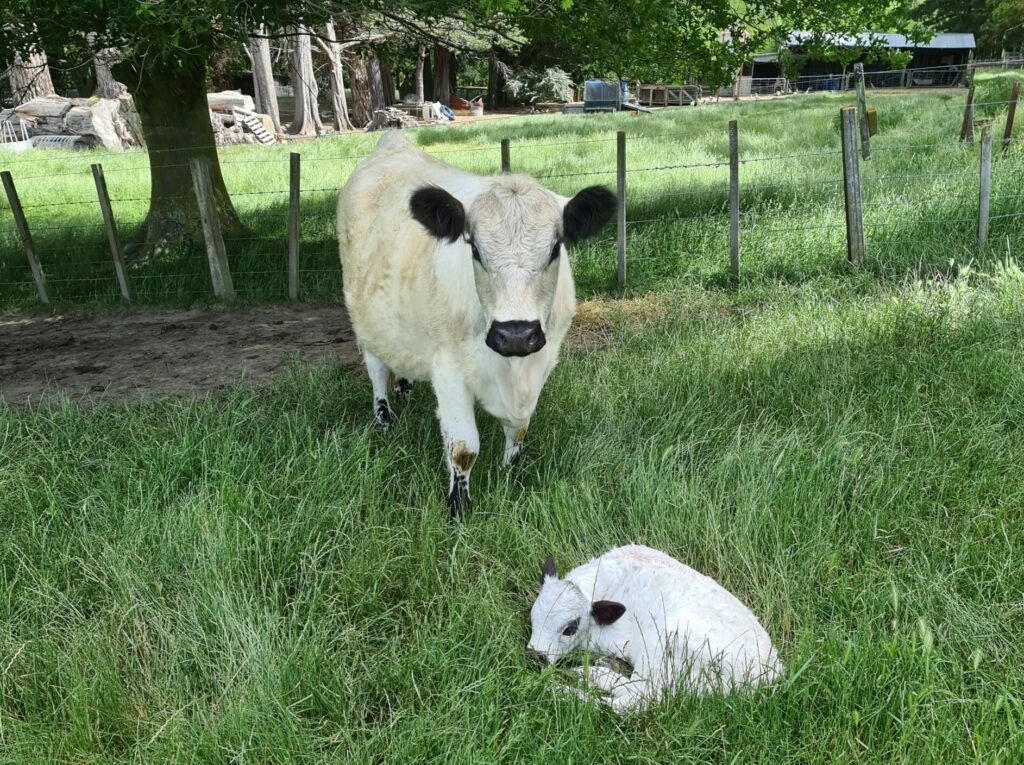The old saying ‘When the going gets tough, the tough get going’ is never truer than when describing the Galloway cattle breed.
When times are tough Galloways do what they do best – convert marginal feed into beef.
The Galloway is named after the Galloway region of Scotland and is one of the world’s longest established beef cattle breeds. They are extremely hardy, excellent foragers and thrive in cold, rough, hilly country.
Galloways come in four breed types: belted, riggit, solid and white. They are a medium-sized beef animal, with a shaggy, double, weather-resistant coat. The cows breed easily and bear calves with a low birth weight.
Gus and Anita Smith own Abergeldie White Galloways in Waipukurau, Hawke’s Bay. Gus is also the president of the Galloway Cattle Society of New Zealand.
The couple’s 125ha farm has a flat frontage that evolves into rolling contour and a very steep back 30-40ha. They have owned the farm since 2010.
“The farm just goes straight up to steep limestone hills. We have a track to the top, and along the top it varies from 150m wide to just wide enough for a motorbike to get through,” Gus says.
They have around 30 breeding cows, 30 two-year-olds and 30 yearlings as well as 250 breeding Dorper ewes
At first they farmed their White Galloways as a hobby, but due to the breed’s ability to handle the tough conditions at the back of the farm and thrive on its rougher grass, tidying it up for the sheep, the Smiths decided to increase their numbers.
“Galloways can handle being high up on the rough land at the back of our farm. As long as you don’t spook them, they can stand up on land that humans struggle to stand on. They just wander around eating the rough tucker,” Gus says.
“They’re more of a browser than a heavy grazer. Even if they’re on good tucker, they’re a bit like a goat in that they supplement their diet with some rough tucker. They go right up to the top of the hills and can stay there for three or four days before coming back down to the water troughs.”

Galloways cope easily with hot and cold conditions and eat practically anything. During a hard drought Gus went to a paddock that had been a bit boggy but was still growing some grass. He noticed that the cattle were eating the rushes and within three days they’d eaten them all.
“About seven years ago it snowed heavily. At the top of the farm, it was so thick that you could have gone skiing. Then an icy wind hit and blew the snow around. The Galloways stood in the middle of the paddock, scraping away the snow to get to the grass. The crossbreds that we had at the time were all hiding in the forestry,” Gus says.
The Smiths mostly sell their two-year-old bulls to dairy farmers who use them to get their heifers in-calf. Galloways have small, low birth weight calves that can still be raised for beef, which helps to reduce bobby calf numbers.
White Galloways are ideal for colour marking so you always know the calves aren’t the tail end of your AI.
“One old-timer once said to me that if your neighbour was pinching your calves, then you should use a Belted Galloway bull because they won’t be able to steal them after that,” Gus jokes.
Farmers often buy several bulls and rotate them out of the heifers to tail the herd after AI. A pure-bred Galloway newborn calf weighs around 20-25kg and Gus can’t remember ever needing to help calve a purebred Galloway.
“Newborn Galloway calves act like deer fawns. After a calf is born, it gets up, has a drink, and then it’ll find a place to hide and sleep. It’ll stay there until the mother comes back from grazing.
“When you come across a calf in the paddock you automatically look for Mum. When you have a look around you usually notice a cow watching you and you know it’s the mum. For the first three days the calf hardly moves and the mother returns to feed it three or four times a day.”
Bulls traditionally lose weight while they’re working. But if Galloway bulls are put on good feed afterwards they quickly pack on weight, making them very economical when using them for mating.
“If the bulls are fed well after mating until around March/April, the farmer usually gets their purchase price back when the bulls go to the processor. The bulls usually have a carcase weight of 290-330kg,” Gus says.
The Galloway breed once had a reputation for having a less-than-ideal temperament. But the Galloway Cattle Society and modern breeders have worked very hard to eliminate that trait.
“Breeders now have a large number of animals to pick from and cull for temperament. We cull heavily. Any animal that snorts at us in the yards is put on the truck to the processor,” Gus says.
This year is the Galloway Cattle Society of New Zealand’s 75th jubilee year and in 2025, NZ will host the World Galloway Congress, which will keep the entire society very busy with the biannual event held for international breeders and enthusiasts of the Galloway breed.
The location of the congress rotates giving people a great opportunity to visit other countries and view first-hand Galloway cattle herds and their different farming management regimes.
This article first appeared in the September edition of our sister publication, Dairy Farmer.










